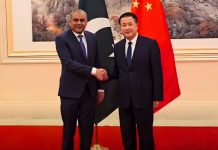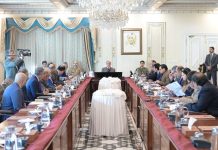DM Monitoring
BAKU/YEREVAN: Hopes of ending nearly a month of bloodshed in the mountain enclave of Nagorno-Karabakh looked slim on Thursday as Azeri and ethnic Armenian forces fought new battles on the eve of talks in Washington. Plans for US Secretary of State Mike Pompeo to meet the foreign ministers of Azerbaijan and Armenia on Friday raised hopes this week that the two former Soviet republics would agree to end their deadliest fighting since the mid-1990s.
But those hopes have been dented by the continued heavy fighting in and around Nagorno-Karabakh, a breakaway territory that is inside Azerbaijan but controlled by ethnic Armenians, and by angry rhetoric from both sides. Hundreds of people have been killed since fighting flared on Sept. 27, raising fears of a wider war drawing in Turkey and Russia and increasing concern about the security of pipelines in Azerbaijan that carry Azeri gas and oil to world markets.
Armenian Prime Minister Nikol Pashinyan said on Wednesday he could see no diplomatic resolution of the long-running conflict at this stage. In a transcript of comments to the Nikkei newspaper published on Thursday, Azeri President Ilham Aliyev said the prospects of reaching a peace settlement were “very remote”.
Reiterating Azerbaijan’s main condition for ending the fighting, Aliyev demanded promises that his country will be handed back control of Nagorno-Karabakh, which broke away as the Soviet Union collapsed.
“So our main objective at these discussions will be to find out whether the Armenian leadership is ready to liberate our territories or not, and if ready, then when?” he said. Armenians regard Nagorno-Karabakh as part of their historic homeland and accuse Azerbaijan of making a land grab in the recent fighting.
Russia has brokered two ceasefires since Sept. 27 but neither has held. Azerbaijan reported fighting in several areas on Thursday, including territories near the line of contact that divides the sides. It also said Armenia had fired three ballistic missiles at three regions.




